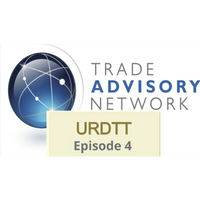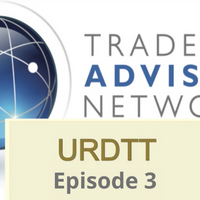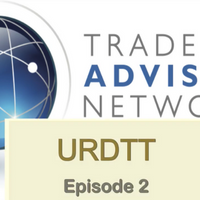 https://treasuryxl.com/wp-content/uploads/2025/11/FinanceKey-Featured.png
200
200
treasuryXL
https://treasuryxl.com/wp-content/uploads/2018/07/treasuryXL-logo-300x56.png
treasuryXL2025-12-11 07:00:242025-12-11 09:16:42How to Design a Treasury Technology Roadmap
https://treasuryxl.com/wp-content/uploads/2025/11/FinanceKey-Featured.png
200
200
treasuryXL
https://treasuryxl.com/wp-content/uploads/2018/07/treasuryXL-logo-300x56.png
treasuryXL2025-12-11 07:00:242025-12-11 09:16:42How to Design a Treasury Technology RoadmapTrade Finance is an important component for corporate treasurers to navigate the complexities of international trade, access financing, mitigate risks, and optimize liquidity using a range of traditional and innovative trade finance instruments and techniques.
Understanding International Trade
International trade refers to the exchange of goods, services, and capital across national borders. It involves importing and exporting goods and services between countries, and it plays a significant role in the global economy. International trade encompasses various aspects such as cross-border transactions, customs regulations, foreign exchange risks, and compliance with international trade laws. It enables businesses to expand their markets, access resources, and benefit from comparative advantages across different countries. Trade finance is crucial for addressing the challenges and financing needs of international trade transactions.
Exploring Types of Letters of Credit
Letters of Credit (LCs) are widely utilized in international trade to enhance convenience and eliminate potential risks associated with cross-border transactions. These instruments provide a reliable mechanism for guaranteeing payment and delivery of goods or services, instilling confidence between trading parties and facilitating smoother trade relationships. LCs serve as a valuable tool in eliminating uncertainties and promoting trust in international trade transactions.
The main types of Letters of Credit are:
- Irrevocable LC: The most common type of LC used in domestic and international trade, it guarantees payment as per the terms of the documents presented by the beneficiary. It cannot be cancelled or amended without the consent of all parties involved.
- Revocable LC: Not commonly used and not covered in UCP 600, the issuing bank or applicant can cancel it before shipment. However, it can still be established upon the request of the applicant.
- Irrevocable Transferable LC: The LC can be transferred by the advising bank at the beneficiary’s request, either partially or fully, while keeping the profit. Once transferred, it cannot be transferred back to the original beneficiary.
- Irrevocable Confirm LC: The LC includes a payment guarantee from an advising bank or a nominated bank, which adds confirmation to the LC. This type of LC is subject to confirmation charges and is used in specific cases such as high-risk buyers or challenging geopolitical conditions.
- Irrevocable Back-to-Back LC: Not covered in UCP, this type of LC allows the beneficiary to open another/local LC with the same terms and conditions, using the original LC as security for payment for the supply of goods.
- Irrevocable Revolving LC: Provides flexibility by reinstating the LC amount upon utilization, allowing for exports of different goods at different periods without committing the total value of all exports in one LC. It reduces the requirement for lower LC limits or cash margins.
- Irrevocable Stand-By LC: Provides a guarantee to suppliers of services, equipment, or airlines for payment upon completion of services or within the agreed time period. It is commonly used worldwide, particularly in the airline and equipment rental industries.
Commodity Trade Finance
Commodity trade finance encompasses specialized financial structures and arrangements that facilitate and support the trading of commodities. These financing solutions are used in both emerging markets and OECD countries and rely on self-liquidating cash flows generated from the trading of commodities to mitigate credit and transfer risks.
Commodity trade finance includes various structures such as pre-export finance and pre-payment finance, which are based on export contracts between exporters and off-takers, utilizing the proceeds of the exports to enhance loan repayment. Additionally, borrowing base finance provides credit facilities to processors or traders in commodities, securing repayment with pledged inventory and receivables. Warehouse financing is another form of commodity trade finance, where financing is provided against the security of warehouse receipts representing the underlying commodities. It allows manufacturers or producers to use the commodities themselves as collateral, increasing working capital.
Structured Trade Finance
Structured trade finance refers to a specialized form of trade finance that utilizes complex financial tools and techniques to provide funding and credit to participants involved in trade transactions. These structured funded trade finance products include various instruments such as pre-export finance, pre-payment finance, tolling, inventory finance, borrowing-based facilities, and asset-based lending, among others.
The primary objective of structured trade finance is to address the specific financing needs of participants in trade transactions, enabling them to effectively manage and optimize their cash flow, mitigate risks, and facilitate smooth international trade operations.
Conclusion
Trade Finance is essential for corporate treasurers navigating international trade complexities, accessing financing, mitigating risks, and optimizing liquidity through traditional and innovative instruments, while structured trade finance and commodity trade finance provide specialized solutions to support trade transactions.














































